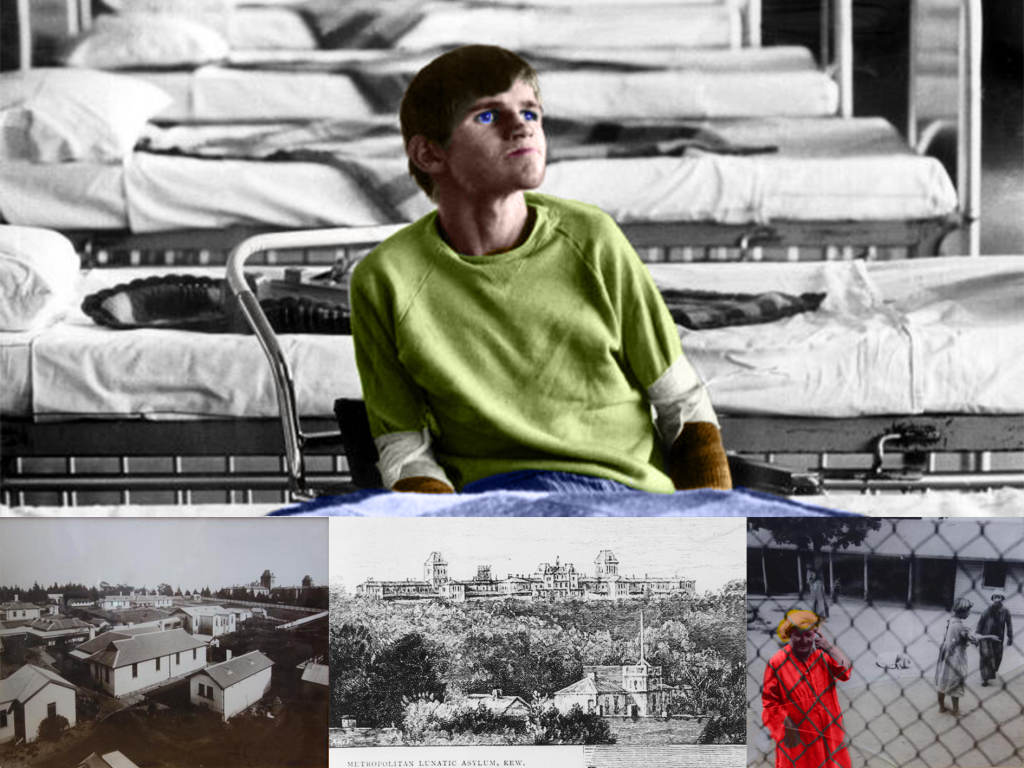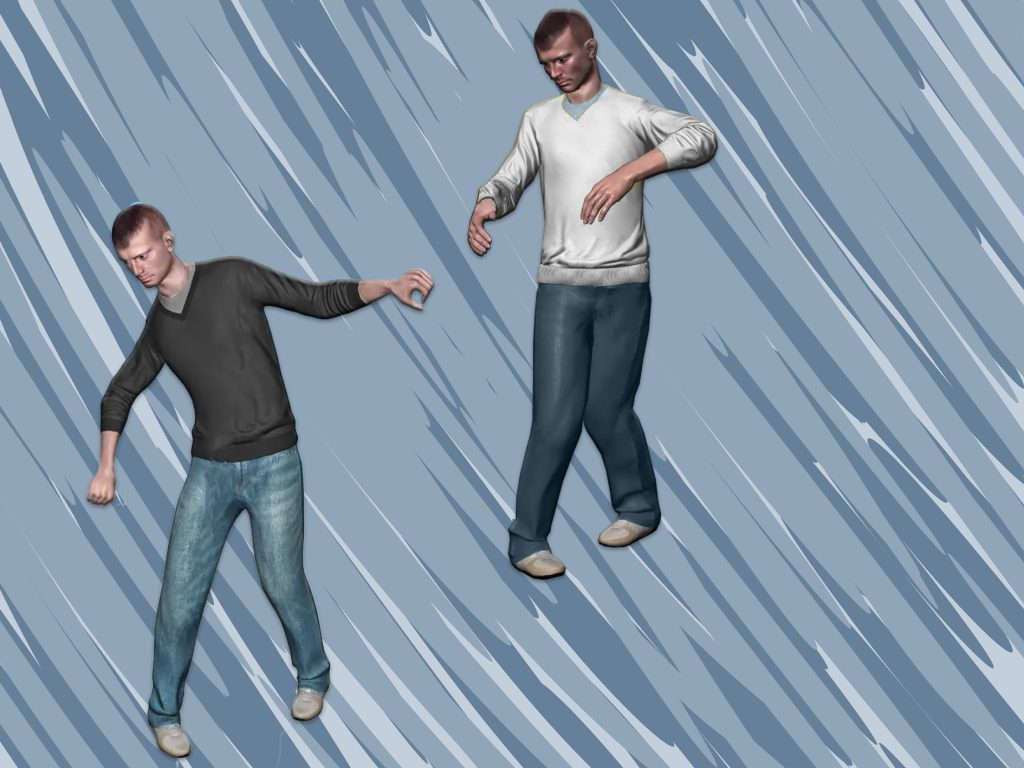
The barriers damaged humans encounter in their daily life include inaccessible education systems, inaccessible work settings, deficient impairment benefits, discriminatory health and social support services, hard to access transport, unfit for purpose accommodation, public buildings, and amenities.
The degrading of some types of body damage in people occurs through innocent ignorance, comic relief, and negative images in the media – films, television and newspapers.
There are a number of ‘models’ of ‘disability’ which have been outlined by academics and human rights activists over the past five decades. The two more often cited are the ‘social’ and the ‘medical’ models of ‘disability’.
No model makes a solid contrast between body damage and social ‘disability’.
No model makes a solid contrast between body damage and chronic illness and chronic critical illness.
No model makes a solid contrast between supervision care giving, nursing care, and independence upkeep.
The solid contrast needs to be made to help society to understand what an independent productive life really means for people who are born with ‘disability’, people who acquire ‘disability’ and people who are lumped with ‘disability’. There would be no need to overcome a singular ‘disability’ identity or downplay the significance of body damage in seeking access to a mainstream identity.
The traditional charity/welfare model, while humanitarian in theory, has limited aspirations for ‘disabled’ people. The charitable drive is to provide good medical care in a comfortable place to live with protection against those who may want to take advantage of the ‘disabled’ person.
The social model of ‘disability’ was the ‘big idea’ of the ‘Disability Movement’.
The British social model came first and then the American social model surfaced around the same time in the early 1970’s. The two same named social models have distinct and opposing views. The British model highlights disabling barriers which oppress a social group, whereas the American model highlights ‘people with disability’ as a minority group within the tradition of political thought.
In spite of the social model being created and forced by ‘disability’ activists neither the social nor medical model adequately explain the experiences that ‘disabled’ people have living in different ways. In spite of some amazing insurance company compensation wins ‘disability’ is seen in all models as a proof of a failing of society.
Models confuse everything. Models are an academic and political football. Argument occurs about which collective consciousness model theory is best for policy and service provision practice and all humanitarian focus on people is lost in the maze. Functional limitation due to body damage is not seen by academics, advocates, and activists as an adequate foundation to build a political movement for transformational change. Society has been coerced to lump all cohorts into the catch all ‘disability’ label.
Models do not solve the real calamity in our society that continues to discriminate, exclude, and oppress people with body damage viewed and labelled as ‘disabled’.
The British social model, influenced by an academic Marxist perspective, explains ‘disability’ in relation to social barriers and the organization of society. Externally imposed restrictions. Conceptually, it is not about the personal experience of body damage but the collective experience of ‘disablement’ in a ‘disabling’ society.
The individual or medical model is underpinned by the idea of ‘disability’ as a personal tragedy with sickness the foundation and life thread.
‘Disability’ under both social models focuses on the interests of competing groups and resources in society and have become a phenomenon denoting inability to work, dependence on society, neglect of differing impairments, and toning down of personal experience.
‘Disability’ has become a public metaphor for sickness and unhealthy. An image sold to society in the form of the progressive social model of ‘disability’ and the stagnant medical model of ‘disability’ that is said to be monolithically and oppressively imposed on ‘disabled’ people.
The social models seek to change society and demonise any medical intervention and traditional care models. Institutions are increasingly accused of denying liberation, freedom, and protection, and increase oppression. The de-institutionalise speeches have one main topic – bash the institutions. Declare that nothing good ever happened in one. Opposition views are present but supressed.
Forget the individual! ‘Disability’ has become an institution founded for the social purpose of sponsoring service providers. A great big expensive job creation scheme.
“I’m not going to clean your no ‘disability’ home for $35- an hour when the NDIS pays me $60- per hour for disability services”.
The decision to close the large-scale Victorian residential care institution of Kew Cottages was a pork-barrelling clinical one which was done without consultation with the people who resided there. Because of where it was situated for over half a century every few years there was a push for it to be sold and the land redeveloped.
The residents of Kew Cottages lived under the protective care of the government of the day who was publicly responsible for wards and other mentally deficient people who resided in the Colony of Victoria until federation in 1901 and then the Sate of Victoria until the facility closed in 2008.
1887–1905 – Hospitals for the Insane Branch – inmates.
1905-1934 – Lunacy Department – patients.
1937-1944 – Department of Mental Hygiene – patients.
1944-1952 – Department of Health – patients.
1952-1962 – Mental Hygiene Authority – patients.
1962-1978 – Mental Health Authority – trainees.
1978-1985 – Health Commission of Victoria – trainees.
1985-1992 – Community Services Victoria – trainees.
1992-1996 – Department of Health and Community Services – clients.
1996-2010 – Department of Human Services – clients.
The decision to close and sell off Kew Cottages is reported to have been made to enhance the lives of the poor unfortunates who lived there but in truth the residents were not asked what they wanted. The assumption was made no one living in such a place could be happy. The residents’ choice was limited to the question “What suburb do you what to move to?” The personal connections of long-term residents to the place was never given a minute of thought. Nor was rebuilding it to modern day standards.

Although its history indicates it was treated as a separate agency than a ward of the Kew Lunatic Asylum, in 1887 Kew Children’s Cottages commenced its existence as a ward of Kew Lunatic Asylum.
The Kew Lunatic Asylum complex of buildings was designed by architects G.W. Vivian and Frederick Kawerau of the Victorian Public Works Office. Construction started in 1864 and finished in 1872 at a taxpayer cost of £198,344. The grounds ornamental gardens were originally landscaped in the tradition of an English country park with featured vegetable gardens, farms, and recreational areas such as cricket ovals and bowling greens. An environment pleasant and beautiful. Surroundings to help ease the mental anguish of the inmates.
The 398 acre site located between Princess Street and Yarra Boulevard in Kew, a suburb of Melbourne, Australia is 8.1 kilometres from the C.B.D. of the state capital city. Chosen with the best intention to house in comfort the growing number of “lunatics”, “inebriates”, and “idiots” living in the Colony of Victoria. The happiness and health of the inmates at that time was considered to be of primary importance to the founders who were of the opinion that the institution would train inmates for ‘lives of usefulness’.
The names of the site over the years included 1887-1929 – Kew Idiot Ward/Asylum; 1929-1962 – Kew Children’s Cottages; 1962-1997 Kew Training Centre; and 1997-2008 – Kew Residential Services.
Three cottages, a schoolroom, playrooms, and kitchen and outbuildings to accommodate up to 60 children were designed as a place of benevolent care and education for feeble-minded children. Kew Cottages opened on 19 May 1887. Nearly a third of the children were epileptic with many others so feeble or backward that they were unable to dress or feed themselves or attend to their basic wants. The next year it was tabled in parliament that signs of improvement were apparent in all the children.
A “Home for Incurables”, the Cottages only admitted children as patients, but many still remained in residence after becoming adults. Kew Cottages was their living quarters and all home meant to them. Records were kept noting whether each resident could walk, run, read, write, sing, or imitate. The medical records detailed the form of insanity.
Day to day operations were separate from the main Lunatic Asylum. However, the cottage administrators had a crossover record in the Annual Examination Registers and the Post Mortem Registers.
Over the years the number of residents varied. In 1887 there were 54 people in residence, in 1897 there were 203 people in residence, in 1916 there were 317 people in residence, in 1945 there were 361 people in residence, in 1953 there were 414 people in residence, in 1955 there were 501 people in residence, in 1968 there were 948 people in residence.
Overcrowding saw living conditions deteriorate from the late 1800’s and economic pull back of funding with no staff pay increases, and a severe typhoid epidemic causing the death of residents and staff in 1907 caused inadequate care to transpire.
All lumped in-together residents of Kew Cottages over the period from May 1887 to 2008 were given social labels and called feeble-minded, lunatics, idiots, mentally retarded, mentally unhygienic, and intellectually disabled.
Misunderstood by the larger community in 1907 the residents were considered to be a menace to the future of the Australian people, something to be feared, so the residents were permanently locked in to protect the community.

In about 1929, the Department of Education opened the Kew Cottages Special School (State School 4431). This was the first school in Victoria for children with mental retardation. The school ceased operating at the end of 1991.
In 1935 overcrowding saw the government of the day upgrade two country Lunatic Asylums some 210 and 275 kilometers away from Melbourne and transferred residents so parents were unable to visit their children.
In 1938 a doctor wrote this report about a child resident who was to be moved from Kew Cottages to a mental hospital in Beechworth:
“She is an idiot of hemiplegic type. She is defective in her habits and unable to attend to her own wants. She is unable to speak and understands simple directions only. She is in fair health and is in the airing court during the day. She is not a hospital case.”
In 1951 as a result of the accommodation provided for Victoria’s ‘mentally defective’ children at Kew Cottages citizens cried. They were incredibly sad, way past the point of disgust or anger. There were three toilets available for 80 girls. Two showers and one bath for 76 people. A table that looked like it had a black table cloth on it was found on closer inspection to be a table covered in flies.
The home of these children was described as, aged filthy buildings, which were in appearance more like a medieval Bedlam than a modern institution for the care of the insane and mentally retarded.
It is widely acknowledged today that from 1912 to 1952 Kew Children’s Cottages, a home for the insane and mentally retarded innocent children, fell into a shocking state of disrepair and had staff shortages due to squalid working conditions because the Victorian governments and therefore society financially neglected the publicly funded home for the incurables. Many residents lived bleak and monotonous lives, with little to do and no visits from family or friends. The ‘incurables’ became unpaid workers and lived bleak and monotonous lives dressed in uniforms resembling prison garb.
Things improved during the 1950’s to 1970’s due to increased government funding. During this period the Kew Asylum saw an increase in the number and range of staff employed. These included: paediatricians; dentists; social workers; psychologists; occupational, physio, speech and music therapists; artisans; and ward assistants. Buildings were remodelled to a high standard to address overcrowding. However, as resources improved the number of residents swelled.
Due to the extreme shortage of accommodation in 1968 and the gravities of a large waiting list, patients admitted tended to be more severely retarded and tendered to have a higher incidence of physical illness and deformities. 54 per cent of residents were within the profoundly mentally retarded range. The accommodation was not fit for purpose for the 200 who had physical impairment so severe special nursing and specially designed accommodation were required.
In 1973 the Age newspaper through its ‘Minus Children’ initiated public outcry and the paper set up a campaign aimed to raise $1,000,000 to upgrade the facility to provide the residents with improved quality of life.
In the 1990’s ‘disability’ rights and advocacy movements fought for more individualisation for residents and pushed for de-institutionalisation. The institution concept became the demon which overlooked the true cause of demise to the place many people called home.
Sometimes the truth is too plain.
Decades of lack of government accountability and funding left the ‘restless spirits running wild’ at the bottom of yet another mountain to climb.
When the Labor government announced the closure of Kew Cottages in May 2000, it came with assurances that the 480 residents would be relocated into more suitable living accommodation. There was an enthusiastic eagerness for simple enjoyments such as the comfort of a private room, instead of shared dormitories.
At the time the estimate cost of relocating residents was $100 million. The Labor government had their eye on the value of the 27 hectare publicly owned site believing the sale price would come into their coffers to spend on other fanciful things.
The Kew cottages were located on prestige residential land close to the Yarra River and the C.B.D. of Melbourne. Instead of redeveloping the publicly owned land for Victoria’s long term prosperity and to make adequate housing on the site, with a distinct lack of transparency the Labor government sold the publicly owned land to a private developers who developed the land for private profit, building private housing, and not housing for the previous residents.
The promise of a financial windfall to the state ‘government of the day’ coffers has not transpired and the ‘disability’ activists still have the same complaint against the government about suitable ‘disabled’ accommodation.
Kew Cottages closure signaled a momentous shift in social policy with the intellectually ‘disabled’ people moving into the mainstream Australian society. Its residents were de-institutionalised into community-based ‘disability label institution’ facilities. Group homes became the new residential hero, but they now are seen as institutional barriers to independent life in the community and like all institutions before them are on advocate get rid of mantra.
The violence, abuse, neglect, and exploitation that occurs is not the fault of the residence. Rather it comes back to social perspectives and behaviours. As an example, a young teenager who lives at home with his parents and siblings has a generously funded by the National Disability Insurance Scheme care package. The teenager is not intellectually inept but is overweight and has, in modern terminology ‘social filter’ issues, in old terminology he is brutally honest in verbalising his thoughts. As part of his taxpayer funded care package he has an allocation for a support person to accompany him on his journey to and from school.
The reason is either to protect:
- the Australian public from this teenager who may say to someone on the way “Stop smoking or you’ll get cancer” or “Speak English, I can’t understand what you are saying.”
Or
- to protect the teenager from the Australian public.
For whatever reason, and either way this teenager has been institutionalised in the outside ‘disabling’ world. He has no level of independence in his travel to and from school. His support person is really a ‘social’ guard engaged to monitor and control and report his behaviour.
The above teenager example demonstrates Australia has unlearned how to be tolerant of people who are different from ‘normal’ while at the same time are living their unique normal life and the Kew Cottages institution setting for the ‘incurables’ mentality still exists.
People should not have to have a ‘disability’ label to obtain funding to live their normal life in a prosperous society and there is nothing wrong with people of similar backgrounds living in a large building complex that has been purpose built to suit their cohort normal lifestyle.
